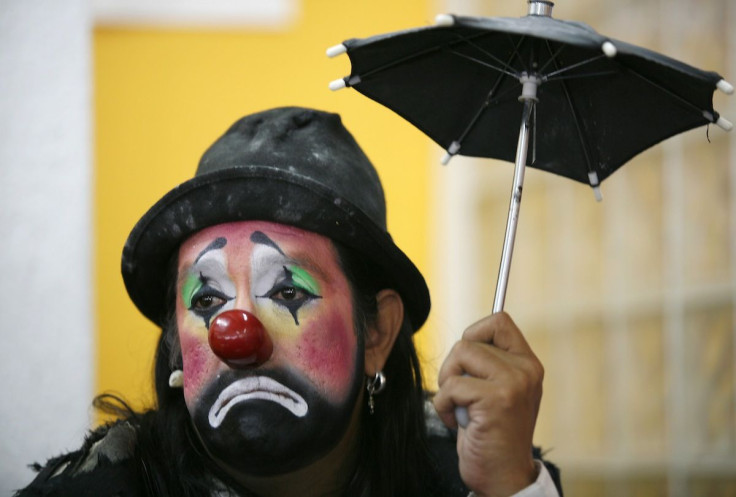Clown Shortage Looming In The US? Not So Fast, Bozo

Good news coulrophobes: The United States faces an imminent shortage of clowns -- at least that’s what the New York Daily News claims in an “exclusive report.”
The tabloid says one of the country’s largest trade groups for clowns, the World Clown Association, has lost about a third of its members over the past 10 years, bringing its numbers down to just 2,500 registered jokers. “The challenge is getting younger people involved in clowning,” association President Deanna Hartmier said, adding that most of her members were over 40.
Glen Kohlberger, president of the rival Clowns of America International, was quoted by the Daily News saying that it’s become increasingly difficult to get younger people who develop an early interest in the craft to stick with it on a professional level. “What happens is they go on to high school and college and clowning isn’t cool anymore,” he said. “Clowning is then put on the back burner until their late 40s and early 50s.”
Kohlberger said the U.S. clown scene is suffering attrition. “The older clowns are passing away,” he said.
Semiprofessional clowns can expect to earn between $200 and $300 for an appearance at a birthday party or festival, making it a tough profession to scrape a living out of. Only the elite few who make it into the fold of world-renowned circuses like the Ringling Bros. or Barnum & Bailey manage to build a life out of their earnings -- and, by all accounts, becoming the best Bozo of the bunch is no easy task.
The Daily News reported that, of the 531 crimson-nosed applications to the Ringling Bros. Clown College in 2013, just 14 finalists were selected to take part in a two-week boot camp, after which just 11 were offered a job in the company. “Our audience expects to be wowed,” the circus’ director of talent, David Kiser, explained. “No longer is it good enough to just drop your pants and focus on boxer shorts.”
So if there is a lack of jobs and a supposed lack of interest, is it really time to send in the clowns? Or is this just a bit of good old-fashioned clowning around on the part of industry trade groups run by some of America’s best jokesters?
By the looks of it, the supposed clown shortage may actually be a simple case of yellow journalism. Kohlberger claims the Daily News completely misquoted him by using snippets of what was said and ignoring the real information.
“There is no fear of a clown shortage in the U.S.,” he told Gothamist Tuesday. “Clowns of America International is doing very well, and so are the clowns that are members of it. … We are getting new members every day.”
Kohlberger added that, while the organization may have lost a few members due to the economic downturn, “we have thousands of members in the U.S. and worldwide.”
Clown and filmmaker Jeff Seal told Gothamist that to claim the United States is bereft of young clowns is also false; they’re just not joining the unions. “It’s more of a generational thing, I think,” he said. “It’s like joining the Shriners club or something like that. Also, maybe it has to do with the weakening of American labor unions in general.”
Clowns young and old, it appears, will not be riding their wobbly novelty tricycles into the sunset just yet.
They may sport sad faces and dopey gaits, but don’t be fooled: As the terrifying Stephen King novel-cum-TV miniseries “It” proved all too well, clowns are not so easily forgotten.
© Copyright IBTimes 2025. All rights reserved.






















